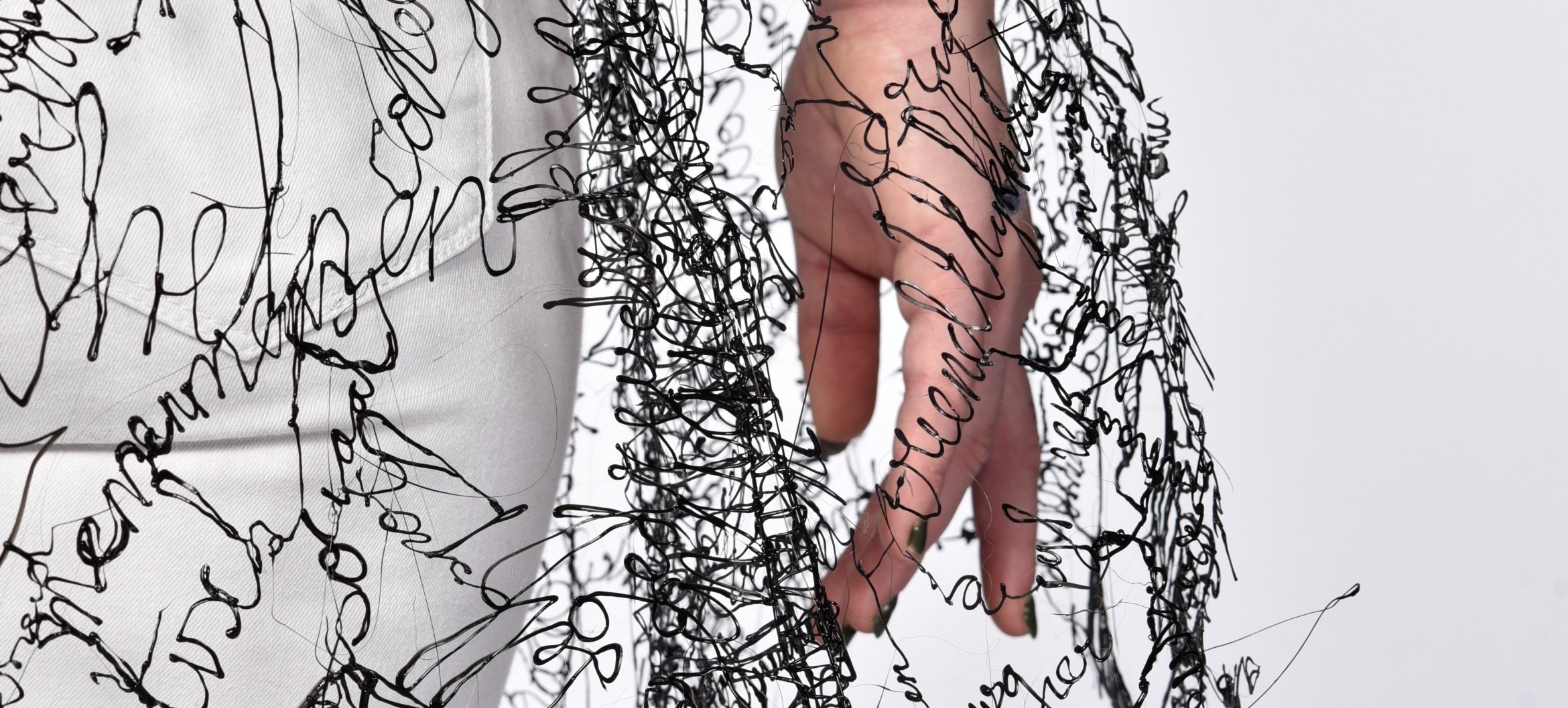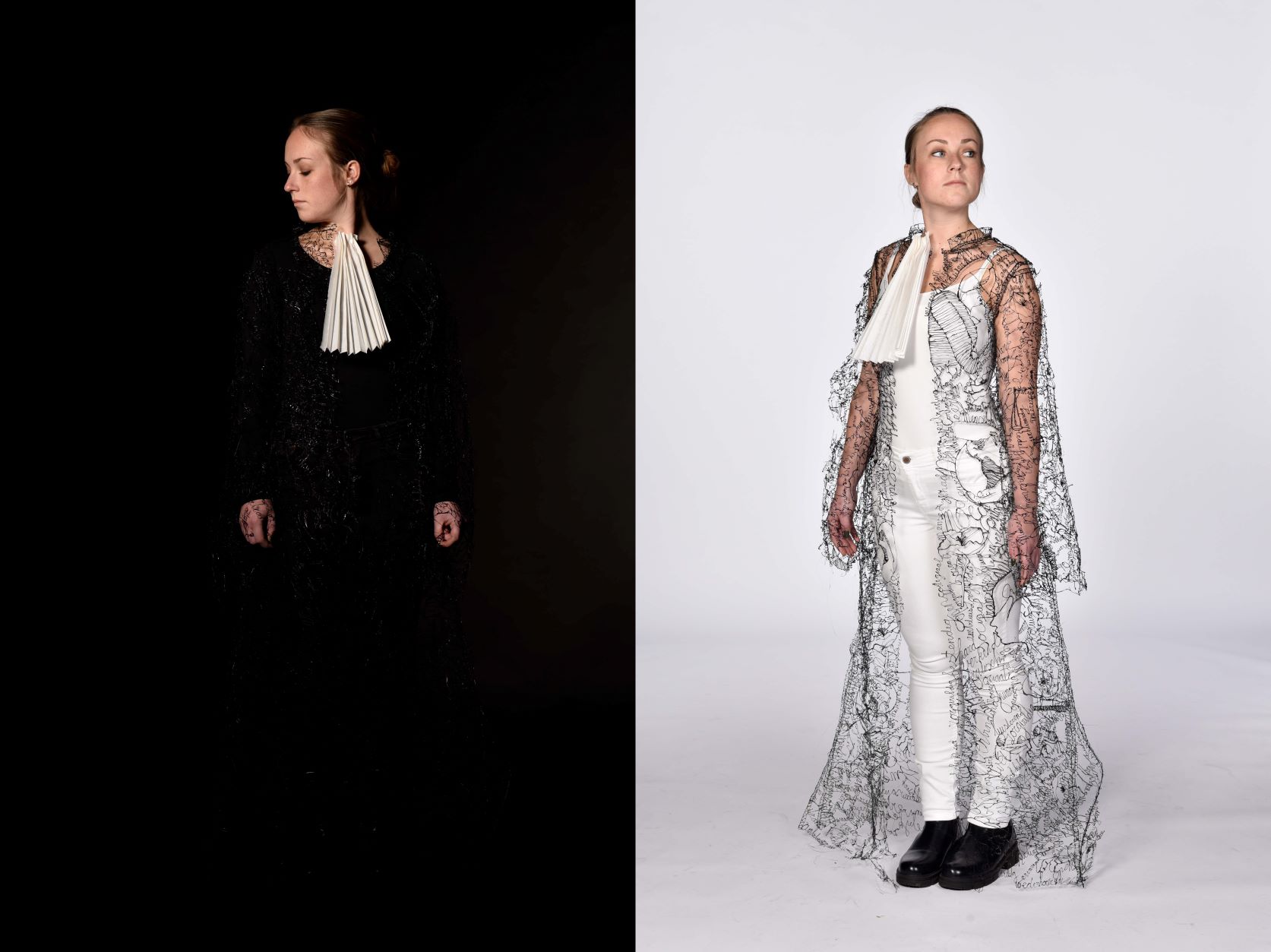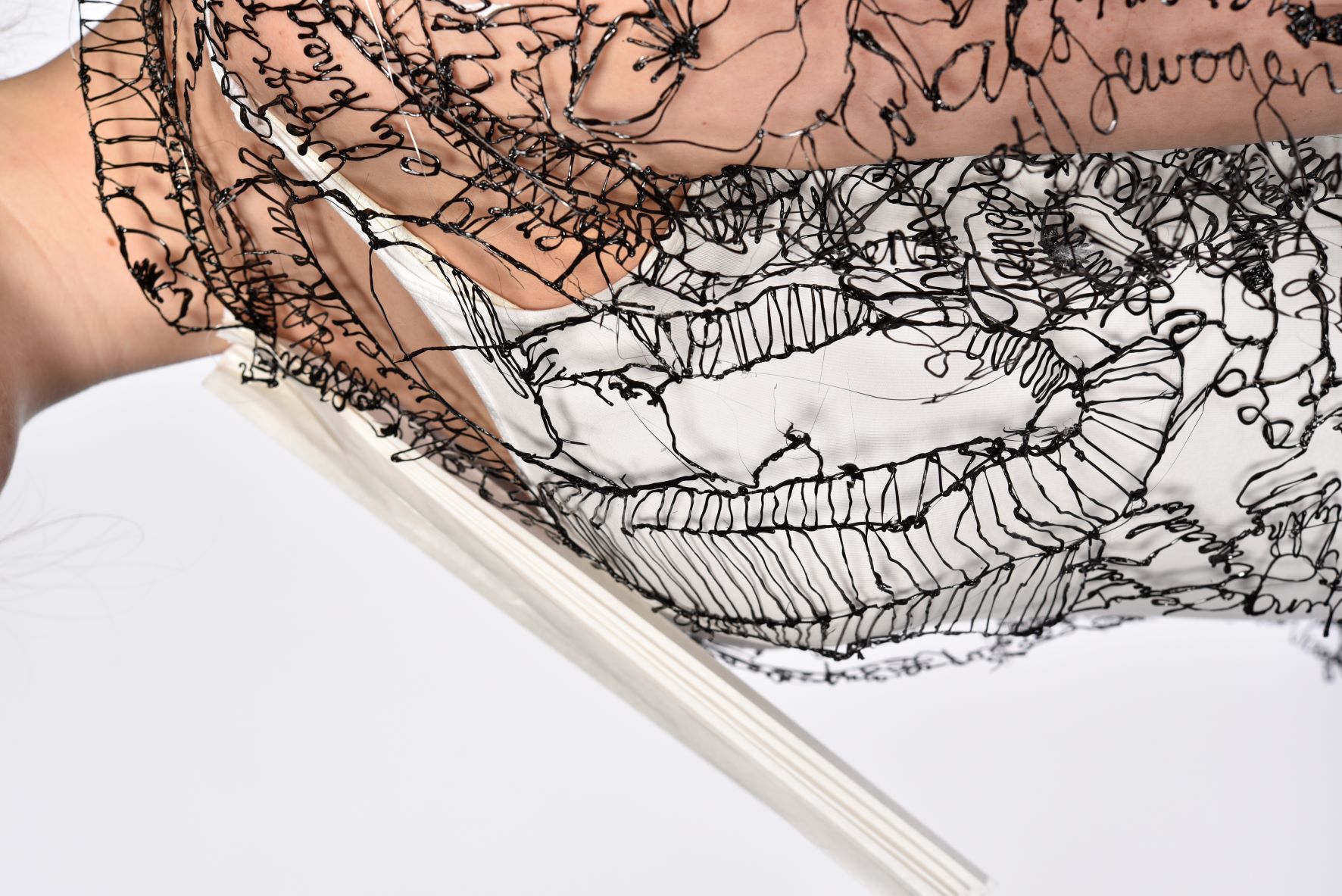Take a peek inside a judge’s robe
Not so long ago, Kirsten Deetman thought she had a clear image of what a judge looked like: a man, dressed in an imposing black robe, who follows the word of law to a T and passes strict judgement. But that image completely shifted while working on a project for her Graphic Design course in Zwolle....

The change began with the Individual Research segment: a research project that students carry out every semester based on a topic of their choosing. Kirsten and her fellow students from the third year of Graphic Design were given the topic of truth.
Personalized robes
Kirsten: "Actually, this story begins with another school project, Design of Justice. Before that project, we all went on an excursion to a courtroom. I got into a conversation with a judge there. I noticed that, unlike the lawyers and the prosecutor, she had a whole row of buttons running along the shoulders of her robes. I pointed it out to her, and she opened her gown. The inside was bright purple." Fascinating, Kirsten thought, especially after this judge told her that many judges had personalized the insides of their robes. Kirsten: "I immediately thought, how cool! Someone should make a project about that. And immediately after that I thought, wait a minute, that person could be me!"

Feyenoord robe
For this project, Kirsten interviewed twelve judges, and some of them did in fact have personalized robes. One of them had put poppies on a bright blue background on the inside of her robes. She had lost her sister and wanted to bring the flowers with her wherever she went, because to her they are a reminder of personal strength. Another judge had a group of Feyenoord supporters printed on the inner lining of his robes but had replaced all the faces with his own." The judges who had personalized robes assigned great value to them: "They liked the idea of bringing something of themselves to court. At the same time, they thought it was important that their robes be neutral on the outside. That way, they stay objective on the outside, but on the inside, they retain their individuality."
Close to your skin
Kirsten asked all the judges she interviewed the same twenty questions. "The answers varied tremendously. I got a fairly good picture of each judge's unique personality from their interviews." With the answers, Kirsten wanted to tell a story. In the end, a book ended up coming out of her interview project with a collection of published interviews from the judges, as well as a robe designed by Kirsten: "I didn't start this research with the idea that it would result in a fashion project. But the research began with a robe, so what could be more appropriate than ending with one? A robe is an intimate garment, worn quite close to your skin; with it you can't physically get any closer to your true self and your own individuality." It is a common misconception that Graphic Design is only about posters and other printed material, according to Kirsten: "My training is not about what you make. It is about communicating what you have to express in the most effective way. In my case, the best way to do that ended up being by designing a robe."

Lines
Kirsten took the most notable personal attribute of each judge, summarized them into one word per judge and wove them into an illustration of interconnected lines made with a 3D pen. "One judge thought humor was very important in life, while another valued being of service, or honesty more." For the robe, she combined those illustrations into a large, uninterrupted pattern of lines. The end result is a robe that can actually be worn.
A human being, not a robot
During her research, Kirsten discovered that being a judge is not always a linear, straightforward role. "A judge is not only there to enforce the law. He or she wants what is best for both parties, and for society. I was particularly impressed with the balance between humanity and legality; it's not just one or the other in this job. It's good to have a human being deciding for you, not a robot." She also wanted to express that sentiment with the robe made of personal attributes that she designed. "Judges take their humanity in with them to the courtroom. In doing so, they deliver a fairer verdict. Not everyone gets the same verdict, because every person’s story behind the crime matters and is different."
Working with others
The parallel of a human-centric approach also extends to Kirsten. She chose her studies because she wanted to work with other people: "Graphic Design is truly a profession that can link art and working with people. I don't want to just sit behind the computer, I want to help people. After this study I am able to do just that. Having contact and collaboration with other people is my first priority."



